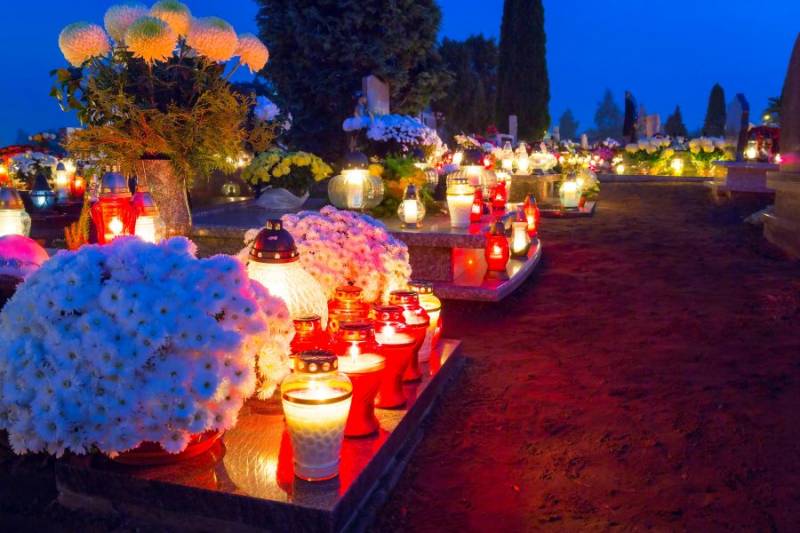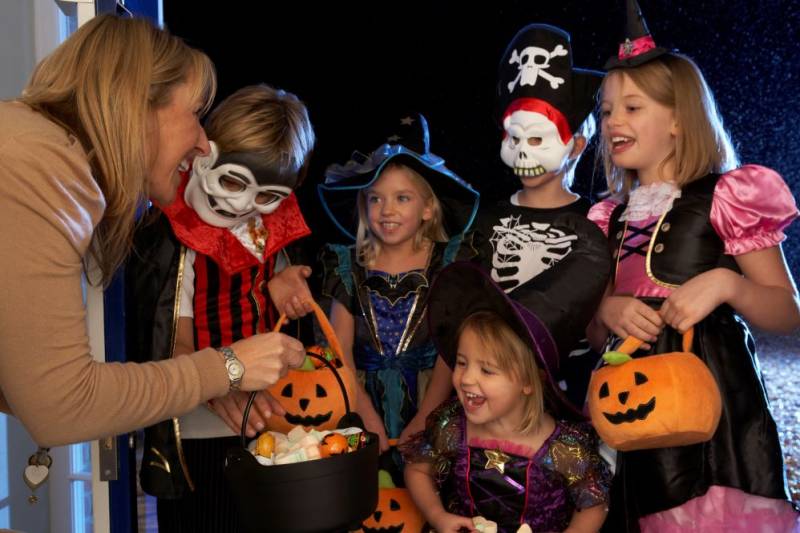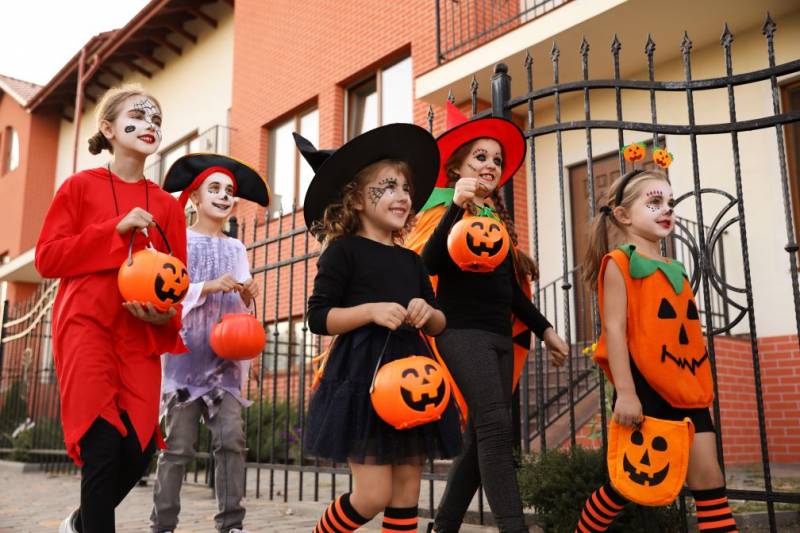
To be listed on the haciendadelalamo TODAY MAP please call +34 968 018 268.
article_detail
Date Published: 30/10/2024
Halloween and All Saints' Day in Spain: Traditions and everything you need to know
The holiday has grown in popularity in recent years—here is all you need to know about Halloween and the related holiday of All Saints’ Day in Spain

In recent times, Halloween has become ever more popular in Spain. No longer is it merely an imported holiday without its own character. Now, Spanish towns and cities have embraced Halloween with spooky parties, themed events and many more traditions that put a Spanish twist on a holiday that was traditionally used as an excuse to honour the deceased at the graveyard.
What happens at Halloween in Spain
With the traditional date of October 31, Halloween in Spain is not just costumes, candy and spookiness; it’s a profound cultural event that showcases the country’s rich historical tapestry.
From the Celtic-influenced celebrations in Galicia to the cosmopolitan festivities in Alicante, each region of Spain offers a distinct experience. The differences in celebrations highlight the cultural influences of each region and the customs they place on Halloween.
In regions like Galicia, where Celtic traditions have a strong historical presence, Halloween is known in the local language as ‘Noite dos Calacús’ (Night of the Pumpkins). Here, the night is filled with tales of spirits and ancestral rituals that date back centuries.
In Alicante however, Halloween takes on a more modern form with elaborate parades, horror-themed parties and events that attract both locals and tourists.
Furthermore, the impact on Spain that Halloween has extends beyond mere celebration. The holiday serves as a bridge between the old and the new, where ancient customs merge with contemporary festivities.
Halloween in Galician tradition
Galicia stands out as a very interesting example of how Halloween has taken on its own traditions in the region. The Celtic roots are evident in the Noite dos Calacús, where ghost stories and pumpkin carvings dominate the night.
This celebration is deeply entrenched in the ancient beliefs of the region, where locals gather to ward off evil spirits through rituals that date back to pagan times.
The night is not only about fear but also about remembrance and respect for the ancestors, making it a profound cultural experience.
The atmosphere in Galician towns during this night is electrifying, with homes and streets adorned with carved pumpkins as families share stories of spectral encounters and children dress up in costumes, running from house to house.

Halloween treats in Spain
The most famous dishes in Spain’s culinary arsenal at Halloween are the ‘Huesos de Santo’ and ‘Castanyada’. These culinary traditions offer a taste of Spain’s rich cultural heritage and are integral to the spirit of the festivity.
Huesos de Santo, or ‘Saint’s Bones’, are marzipan sweets that are typically enjoyed during this time. Their shape resembles bones, paying homage to the deceased.
Alongside these, ‘Castanyada’ is made by roasting chestnuts, which are served warm and often accompanied by sweet wines or herbal liqueurs, creating a sensory celebration of autumn.
The preparation of these dishes is both a communal and family affair, with recipes passed down through generations. This culinary aspect of Halloween not only satisfies the palate but also strengthens bonds among loved ones, as they gather to prepare and share meals that have been part of Spanish Halloween traditions for centuries.
All Saints’ Day and Day of the Dead
Beyond the pumpkins and spooky traditions, November 1 and 2 in Spanish culture play a significant role in regards to the remembrance of loved ones. Many people descend upon the cemeteries to pay respects to family and friends they have lost.
All Saints’ Day, known in Spanish as ‘El Día de Todos los Santos’, is a poignant time in Spain, deeply rooted in the Catholic tradition. Families gather to clean and decorate the graves of their departed with flowers, candles, and sometimes personal items, turning the cemeteries into vibrant places of memory and respect.
November 1 is one of the 12 festivos, or bank holidays, celebrated at a national level in Spain. When it falls on a weekday, schools and business shut and supermarkets run reduced opening times. When the festivo falls on a weekend, it is often moved to the nearest working day.
The Day of the Dead, while more prominently celebrated in Latin American countries, has also found its place in Spanish observance, particularly through cultural exchange. This day is marked by the creation of altars (ofrendas) that celebrate the lives of the deceased. These altars are often decorated with photographs, favourite foods, and mementos of the departed.
In some regions, families spend the whole night at the cemetery, sharing meals and stories in a powerful expression of love and remembrance.
How is Halloween in Spain different from the United States?
Halloween in Spain differs from the United States through its blending of modern festivities with traditional customs. The US is known for large parties and trick-or-treating. In Spain, however, Halloween is much more recently celebrated and it coincides with Día de Todos los Santos (All Saints’ Day) on 1 November.
That said, trick-or-treating and costumes are becoming popular, especially in urban areas, but the holiday remains less commercialised and more subdued compared to the extravagant celebrations typical in the US.

So, whether you are looking for a haunted adventure or merely a traditional celebration of regional customs, Spain has all your bases covered.
For more information, news and what’s on in your area visit our homepage at Spanish News Today
Images: Archive
Loading
Sign up for the Spanish News Today Editors Roundup Weekly Bulletin and get an email with all the week’s news straight to your inbox
Special offer: Subscribe now for 25% off (36.95 euros for 48 Bulletins)
OR
you can sign up to our FREE weekly roundup!
Read some of our recent bulletins:
Discount Special Offer subscription:
36.95€ for 48 Editor’s Weekly News Roundup bulletins!
Please CLICK THE BUTTON to subscribe.
(List price 3 months 12 Bulletins)
Read more stories from around Spain:
Contact Murcia Today: Editorial 000 000 000 /
Office 000 000 000




















